Key points:
- The first comprehensive proposals to establish a carbon border adjustment mechanism (CBAM) came to light in mid-2021.
- In theory, CBAM is intended to prevent carbon leakage, encourage the implementation of cleaner technologies abroad and ensure a level playing field for local and foreign manufacturers. However, there are legitimate concerns that, in practice, its implementation will result in discrepancies and favoring of some markets over others.
- The geopolitical and geo-economic implications of CBAM implementation, difficult to determine today, will be shaped by the broader global climate agenda and the policies that states choose to pursue in order to maximize their positions in the international balance of power.
What is a carbon tax (CBAM)?
In July 2021 the European Commission[1] and a group of U.S. Senators[2] made public draft regulations intended to introduce carbon taxes on both sides of the Atlantic. ‘Carbon tax’ and ‘CBAM’ have thus become the new buzz words of the day, but what do they actually mean? In the simplest terms, CBAMs are tariffs, taxes, fees, or other measures applied to imported goods determined by their greenhouse gas emissions and/or rebates for domestic exports to markets that have not implemented comparable emissions restrictions. In other words, CBAMs create instruments designed to compensate the receiving country for the difference in costs resulting from GHG emissions associated with their production in the country of origin.
In the EU, CBAM is considered a key part of a broader effort to build EU’s strategic autonomy. It functions as an instrument conceived to project and promote European regulatory authority beyond the EU and strengthen its position as a global leader in the fight against climate change. It is also meant to address the issue of the so-called carbon leakage and to increase the political legitimization of the green transformation. The introduction of CBAM has been identified as a key priority for the French Presidency of the EU Council and the subsequent Czech and Swedish Presidencies[3], although operational details still remain to be decided by the European Parliament and EU member states.
For all the fanfare that they generate, the EU’s pioneering ambitions for the European carbon tax are facing significant opposition from countries that see it as a protectionist measure that will hurt them and their industries. Today, major countries voicing such concerns include China or Russia; tomorrow, they may include United States if a future, possibly Republican administration, decides to do away with its current climate-oriented policies. The EU’s pursuit of plans to introduce a carbon tax may engender significant restructuring of global supply chains in response to the CBAM measures being implemented. Implementing CBAM would create new risks and exacerbate existing economic and trade disparities between states that abide by CBAM regulations and those that are unable or unwilling to comply. However, as long as the future carbon tax regimes put in place by other jurisdictions are equivalent to EU standards, a rough alignment of such measures may lead to a certain level of transnational regulatory harmony.
The basic tenets lining the CBAM mechanism include preventing GHG leakage (i.e., carbon leakage by shifting production or supply chains to countries with less stringent climate policies), encouraging the deployment of cleaner technologies abroad, and ensuring a level playing field in competition between local and foreign producers[4]. Under the border adjustment regime, a CBAM border fee levied on goods according to their embedded carbon content and the difference in the applicable carbon cost is intended to eliminate the incentive for importers to favor cheaper, dirtier goods over cleaner counterparts produced in jurisdictions with more ambitious climate policies.
To fully understand the concept of the CBAM mechanism and to enable an effective analysis of its economic and trade implications, it is necessary to identify and consider all the components of the puzzle that constitutes it. The following elements have been identified as ones whose form of inclusion in CBAM implementation measures will define the effectiveness of the tax: policy design; scope of trade flows and emissions concerned; geographic and sectoral reach of the measure; the ways in which it accounts for embedded emissions; calculation of the adjustment; use of revenues collected from the tax; timing of withdrawal of free allowances granted to economic operators; and the overall quality of the administration of the carbon tax[5]. Determining the impact of each of these elements, however, will not be the focus of the following analysis, which is limited to the geopolitical dimension of the effects of CBAM implementation. Still, when undertaking an analysis of even such a narrowed subject area, it is useful to be familiar with at least the key elements of the EU and U.S. proposals to date.
Different visions for CBAM
CBAM in the EU
When considering the EC’s proposal for a European carbon tax, it is important to keep in mind the distinction between a new instrument in the form of CBAM – designed for companies operating outside the EU – and the EU Emissions Trading Scheme, the so-called EU ETS, which has been in place since 2005 and designed for entities active within the EU. This functional distinction is fundamental because the role of the EU ETS is not to reduce emissions outside the EU, but only those generated by demand within its frontiers. CBAM, on the other hand, is meant to become the tool through which the Union would contribute to reducing emissions outside the EU.
The proposed CBAM system would require importers of certain products in the EU to pay for the carbon dioxide emissions generated while manufacturing. Such payments would take the form of mandatory acquisitions of CBAM certificates, calculated on the basis of weekly average emissions under the EU ETS and expressed in euros per tonne of CO2 emitted. CBAM is to be phased in from 2023 in the form of specific emissions reporting requirements, moving then to full implementation by 2026. Products covered will initially be limited to iron, steel, cement, fertilizers, aluminum and electricity generation, with the goal of expanding the list to 56 categories of goods down the value chain. This narrow sectoral scope includes only direct emissions (so-called “Scope 1” emissions), and the future CBAM revenues will be earmarked for the EU’s own resource target, without specifying an exact target. While the ultimate goal of CBAM in the EU is to cover a wide range of products, the EC’s proposal as currently drafted essentially covers only those products deemed to be at high risk of carbon leakage which it will be logistically feasible to cover. After 2026 EU CBAM would be gradually extended to other goods and services, while the current system of distributing free emission allowances to European manufacturers under the scheme would be phased out between 2026 and 2035. According to the EC proposal, the EU CBAM would only apply to imports into the EU, which may have the effect of displacing some European low-emission products by more carbon-intensive foreign products or, conversely, to displace them in foreign markets by cleaner, low-emission products[6].
At least three other differences between the CBAM proposal and the existing EU ETS are worth noting. First, the average auction price at which importers could purchase the proposed CBAM certificates is intended to reflect the previous week’s average auction price, whereas domestic producers covered by the EU ETS can currently purchase them at the daily spot price. Given that producers today purchase EU ETS emission certificates both to meet this regulatory requirement that may apply to them, as well as for commercial trading purposes, the difference is likely to result in preference for CBAM by domestic producers in lieu of EU ETS certificates. Second, the EU CBAM, unlike the EU ETS, would not be based on an absolute cap on imported GHG emissions, because imposing such quantitative limits on imports would have the effect of restricting trade flows in violation of WTO rules. If the EU ETS proves to be an effective tool for reducing EU emissions, the lack of an equivalent cap in the EU CBAM system could create a risk of carbon leakage and thus weaken the EU ETS. Lastly, the EC proposal does not provide for free trading and retention of certificates by entities cover by CBAM regulations. Unused certificates purchased in the previous year would be automatically cancelled by June 30. Unlike CBAM participants, ETS operators can use periods of weaker political ambition to accumulate cheap allowances and then hold them indefinitely or trade them. They can also hedge against future increases in allowance prices with futures contracts, but also sell or hold 100% of their excess allowances while importers lose two-thirds of them.
CBAM in the United States
There has been increasing discussion in the U.S. since last year about introducing carbon mitigation measures. In March 2021, U.S. Trade Representative Katherine Tai put CBAM on the national trade policy agenda[7], and in May Special Envoy for Climate Kerry recognized CBAM as a useful tool in leveling the playing field with China[8]. In December 2021, Kerry expressed his support for U.S. CBAM[9].
A draft U.S. law unveiled last summer proposed a CBAM that would impose tariffs on imports of aluminum, cement, iron, steel, natural gas, oil and coal beginning in 2024[10], although the proposal differs significantly from the one published by the EU. The draft U.S. CBAM regulation is not based on carbon prices, but on the national cost of compliance with sectoral emissions reductions, calculated at the local, state and federal, levels based on the hard-to-find up-front cost of carbon compliance (the so-called shadow pricing), and offers potential exemptions for less developed countries and similarly ambitious programs. Determination of the fee would be based on the national compliance cost to each sector of any federal, state, or local law or regulation designed to reduce emissions, including state carbon fee systems, but also fuel efficiency standards. Under the U.S. proposal, the CBAM fee would not be the same for all companies, but would vary depending on the adjustment and thus may entail higher costs. Revenue from the U.S. CBAM would be used to administer CBAM implementation, to fund research, development, and demonstration of decarbonization technologies, environmental justice grants, resiliency programs, and support for small businesses.
The fate of the U.S. CBAM legislative proposal depends on a number of factors, but it should not be ruled out that a bipartisan agreement to adopt it would be reached to counter China’s deliberate trade disruptions. As the Biden administration has placed climate change and potential carbon border adjustments at the center of U.S. trade policy, there also is the perspective for an EU-U.S. cooperation on CBAM[11]. After all, despite their differences, both the EU and the U.S. CBAM proposals are based on the same paradigm. Their goal is to impose costs on imported goods comparable to those incurred by domestic producers. At the end of the day, both the EU and U.S. CBAM proposals would result in only a small decrease in global emissions; under the best of circumstances, they may protect trade-exposed and carbon-intensive industries from being dominated by imports of dirty raw materials. Adjusting carbon limits would therefore need to target the sectors with the greatest potential for reducing greenhouse gas emissions.
Other jurisdictions
It is also worth mentioning certain other examples of CBAM measures or other mechanisms with similar objectives. In Canada, residents of certain provinces receive a lump-sum carbon refund as part of their annual tax return, and in Austria the government has introduced a carbon tax and dividend system, as well as a number of friendly tax reductions and subsidies.[12] Austria’s carbon tax is set to be introduced in July 2022.[13] The UK is also working on its own legislation, while keeping a close eye on developments in CBAM discussions within the EU.[14] Other EU neighbors and OECD countries are seeking to introduce CBAM by exploring the development of national carbon pricing schemes. However, many countries – especially developing ones – are concerned about the design, fairness and feasibility of the envisaged regulations.
The geopolitical dimension of the carbon tax
The EU proposal to implement CBAM comes at a time of heightened international trade tensions, triggered by the COVID-19 pandemic and exacerbated by the ongoing war in Ukraine. The timing of the EU’s proposal and the tightening of EU controls over EU foreign investment and trade has led some of the EU’s trading partners to interpret the idea of implementing EU CBAM as a tool to protect the single market under the guise of climate policy. These concerns are not unfounded. Over the past years, the EU has stepped up efforts to defend its strategic economic interests in foreign investment and access to the single market, also to counter unfair trade practices, i.a. through a record number of anti-subsidy and anti-dumping measures[15] and an update of the EU Industrial Strategy[16]. The EU Foreign Investment Screening Mechanism was also launched in October 2021[17], and the EC is currently developing another instrument that would empower the Commission to apply trade, investment, or other restrictions to any non-EU country that interferes unduly with policy choices made by the EU or its member states[18].
The introduction of CBAM, together with the phasing out of free allowances, would impose the full production-related carbon costs on both producers and importers in the EU. Undoubtedly, producers subject to charges resulting from CBAM implementation will be forced or incentivized to pass on the new costs associated with it to target customers by raising prices to preserve their profit margins. Overall, however, “[t]he net CBAM cost for importers, which factors in the recovery through higher market prices is significantly lower than the CBAM fees. Overall, the total net CBAM cost should barely reach €1.0bn in 2026 and €1.6bn in 2035 across imports from six major trading partners” (i.e., the U.S., China, Turkey, South Korea, Russia, and Ukraine)[19]. Ultimately, however, more expensive basic materials will affect the profit margins of indirect EU producers using these materials in their products. Thus, the impact of CBAM on foreign producers of finished products would likely be positive, as they would pay less for basic materials than their EU competitors, giving them a competitive advantage. Significantly, EU CBAM would likely have a relatively small impact on imports from China. The sectors covered by the EC’s proposal as it stands now account for 1.8% of the value of Chinese exports to Europe in 2019, and the potential expansion to other sectors could increase this share to around 5%[20]. This notwithstanding, the prospect of CBAM regulations becoming widespread shows the potential to create a new field of rivalry between states, and opponents of this solution may raise arguments that its introduction constitutes an unauthorized export subsidy under the WTO Agreement on Subsidies and Countervailing Measures.
International Trade Law as a quasi-geopolitical battlefield where CBAM’s fate may be determined
It seems highly likely that the bulk of the battle for the future of CBAM will be decided by international trade law.
Opponents of CBAM raise a number of arguments against it. One common argument is the alleged contradiction of CBAM with WTO rules and its perception as a form of economic protectionism. Such perception may be influenced by various factors, e.g. solutions defining equivalence of requirements and products, purposes for which revenues from the tax are allocated, or the decision to base the price calculation on actual emissions.
To overcome the possible conflict with WTO law, measures implementing CBAM would have to comply with the provisions of the WTO General Agreement on Tariffs and Trade (GATT), which requires equal treatment of “like” goods, or through GATT Article XX, which grants exceptions to GATT obligations with respect to environmental measures, among others. While GATT Article XX gives WTO members justification to impose measures to protect the environment, there are no explicit provisions in the Article that specifically address measures taken to achieve climate goals. Without clear guidance in the GATT Articles, policymakers seeking to impose trade-related climate measures, such as CBAMs, are likely to find themselves in the WTO dispute settlement body to discuss the legal justification for their actions. The case-by-case nature of WTO disputes does not provide a stable framework for countries to take the measures necessary to meet climate goals under the Paris Agreement. Moreover, concerns are multiplying about the perturbations that will be caused by the adoption of trade retaliatory measures by countries whose exporters will be most affected by the adoption of CBAM regulations, which would presumably be similar to those that followed the failed attempt to include external flights in the EU ETS in 2012. Administrative difficulties related to carbon accounting, importer registration, etc. also make the introduction of CBAM a difficult and legally questionable process.
CBAM: between geopolitics and geoeconomics
CBAM is most often criticized as a Trojan horse that, under the aegis of the climate fight, will undermine the political and economic order at the heart of free trade and, as such, is an instrument for advancing individual geopolitical or geo-economic goals. Its implementation in the EU alone will have consequences – first economic and then political – that will affect the global balance of power, even if the extent of its impact remains difficult to determine today.
At least until the 2022 war in Ukraine broke out, the European CBAM was feared by Russia, whose energy companies could lose billions of dollars annually due to the new tax. A CBAM tax targeting natural gas imports would have significant consequences for Russia, the EU’s longtime energy supplier, which is heavily dependent on hydrocarbon and metallurgical exports. The current EU CBAM proposal could increase the cost of importing Russian carbon-intensive products, such as steel and gas by €1.9 billion by 2035[21], although the EU sanctions are likely to affect this estimate. The EU CBAM would likely eliminate Russian agrochemical fertilizers from EU markets because they would become unprofitable. However, Russian steel production could be relatively well protected due to its relatively low carbon intensity. Russia is now expected to develop its own carbon reduction framework in accordance with the Paris Agreement[22], but its fate – as well as Russia’s position on the EU CBAM – will depend on how its political and economic relations with the West develop[23].
As for China, its leaders have repeatedly spoken out against the EU CBAM system. President Xi Jinping said last April that “[r]esponding to climate change is the common cause of all humanity. It should not be a bargaining chip for geopolitics, a target for attacking other countries, or an excuse for trade barriers”[24], and his position was reaffirmed shortly thereafter by Prime Minister Li Keqiang[25].
China might raise its effective carbon price to be in line with the EU’s, but could also face significant domestic political obstacles to achieving higher environmental standards. In the long run, however, CBAM regulations could have a relatively greater impact on other countries – such as Russia – than on China, which could strengthen the competitiveness of Chinese exports in the medium to long term.[26] Raising effective carbon price would not be without impact on the assessment of already existing tariffs affecting EU imports from China. Most products today are subject to a general import tariff, but there are also more severe tariffs in the form of anti-dumping duties for products flooding the market and countervailing duties for state-supported products.
Regardless of the above, the global discussion on climate policy and CBAM in particular seems to have reached a boiling point. Although the instrument will be further contested, the decision on its implementation has already been made, at least in the countries forming the Global North. The actual impact on geopolitics and the balance of political and economic power across geographic space will depend on the final shape of the implemented solutions. However, the main assumptions about the purposefulness of the CBAM mechanism already suggest in which areas this influence will be most noticeable. The implementation of CBAM is expected to reduce dependence on external producers through research-driven technological innovation; it should help combat unfair competition that harms internal industrial production, as well as to tackle carbon leakage by imposing a level playing field and to improve manufacturing compliance with environmental standards. At the same time, the effectiveness – or, rather, the usefulness – of the carbon tax will depend overwhelmingly on parallel actions taken (or the lack thereof) in countries which, at least for the time being, are less interested in meeting global climate ambitions through an instrument such as CBAM. Its baptism by fire should be the introduction EU CBAM, whose fate will likely determine the future of analogous solutions in other jurisdictions. At a time when Adam Smith’s “invisible hand” over the market is no longer invisible, but at most ordoliberal[27], the actions and reactions triggered by CBAM implementation will undoubtedly be determined by the geopolitical and geo-economic gain and loss calculations of individual states (or their alliances), regardless of how ambitious the collectively decided global climate agenda is.
[1] Proposal for a regulation of the European Parliament and of the Council establishing a carbon border adjustment mechanism, European Commission https://www.google.com/url?sa=t&rct=j&q=&esrc=s&source=web&cd=&cad=rja&uact=8&ved=2ahUKEwivt9-YkNf2AhXJFXcKHTmxAXgQFnoECAYQAQ&url=https%3A%2F%2Fec.europa.eu%2Finfo%2Fsites%2Fdefault%2Ffiles%2Fcarbon_border_adjustment_mechanism_0.pdf&usg=AOvVaw338lRdmJi8ArMeBFtLc_h8, access: 21.03.2022.
[2] Bill proposal no GAI21718 59G to amend the Internal Revenue Code of 1986 to establish a border carbon adjustment for the importation of certain goods. U.S. Senate, https://www.google.com/url?sa=t&rct=j&q=&esrc=s&source=web&cd=&ved=2ahUKEwi0yoC73LH2AhXFl4sKHRnDBtgQFnoECAUQAQ&url=https%3A%2F%2Fwww.coons.senate.gov%2Fimo%2Fmedia%2Fdoc%2FGAI21718.pdf&usg=AOvVaw3H0b1fIIN5KaierDup4Gvy
[3] Note from the General Secretariat of the Council to Permanent Representatives Committee/Council, 14441/21, Council of the European Union, https://www.google.com/url?sa=t&rct=j&q=&esrc=s&source=web&cd=&cad=rja&uact=8&ved=2ahUKEwi43ISa39b2AhUol4sKHRmGCaoQFnoECAIQAQ&url=https%3A%2F%2Fpresidence-francaise.consilium.europa.eu%2Fmedia%2Fl5fjwokc%2Ftrio-programme.pdf&usg=AOvVaw0iks7DthkqAh07nLktYWHC, access: 21.03.2022.
[4] Carbon leakage, European Commission, https://ec.europa.eu/clima/eu-action/eu-emissions-trading-system-eu-ets/free-allocation/carbon-leakage_en, access: 21.03.2022.
[5] A. Marcu, M. Mehling, A. Cosbey, Border Carbon Adjustments in the EU: Issues and Options, ERCST; A. Marcu, M. Mehling, A. Cosbey, A. Maratou, Guide to the European Carbon Border Adjustement Mechanism (II; s. 68), ERCST, w: Stockholm Environment Institute, Swedish policy positions and perspectives on CBAM (2022), https://www.google.com/url?sa=t&rct=j&q=&esrc=s&source=web&cd=&cad=rja&uact=8&ved=2ahUKEwj9ufyq6Nb2AhWKtYsKHRpmAr4QFnoECAsQAQ&url=https%3A%2F%2Fwww.sei.org%2Fpublications%2Fswedish-policy-positions-perspectives-cbam%2F&usg=AOvVaw1UnxfU9ZW4JJCAdC–B0pZ, access: 21.03.2022.
[6] S. Evans, M. A. Mehling, R. A. Ritz, P. Sammon, Border carbon adjustments and industrial competitiveness in a European Green Deal, “Climate Policy”, 21(3), s. 307–317, https://doi.org/10.1080/14693062.2020.18 56637, access: 21.03.2022.
[7] 2021 Trade Policy Agenda and 2020 Annual Report of the President of the United States on the trade agreements program, Office of the United States Trade Representative, https://www.google.com/url?sa=t&rct=j&q=&esrc=s&source=web&cd=&cad=rja&uact=8&ved=2ahUKEwiI1dmz7tb2AhWEv4sKHdfGAwAQFnoECAYQAQ&url=https%3A%2F%2Fustr.gov%2Fsites%2Fdefault%2Ffiles%2Ffiles%2Freports%2F2021%2F2021%2520Trade%2520Agenda%2FOnline%2520PDF%25202021%2520Trade%2520Policy%2520Agenda%2520and%25202020%2520Annual%2520Report.pdf&usg=AOvVaw3co81Q48Zfio5CcK-S-g_N, access: 21.03.2022.
[8] Financial Times, China must cut emissions to avoid climate ‘chaos’, warns US envoy Kerry, https://www.ft.com/content/35a9fb4f-9f3a-4cff-b9ee-72da27b5a3d4, access: 21.03.2022.
[9] F. Simon, John Kerry: Carbon border tariffs are ‘a legitimate idea to have on the table’, Euractiv, https://www.euractiv.com/section/emissions-trading-scheme/interview/john-kerry-carbon-border-tariffs-are-a-legitimate-idea-to-have-on-the-table/, access: 21.03.2022.
[10] Bill proposal no GAI21718 59G to amend the Internal Revenue Code of 1986 to establish a border carbon adjustment for the importation of certain goods. U.S. Senate, https://www.google.com/url?sa=t&rct=j&q=&esrc=s&source=web&cd=&ved=2ahUKEwi0yoC73LH2AhXFl4sKHRnDBtgQFnoECAUQAQ&url=https%3A%2F%2Fwww.coons.senate.gov%2Fimo%2Fmedia%2Fdoc%2FGAI21718.pdf&usg=AOvVaw3H0b1fIIN5KaierDup4Gvy
[11] 2021 Trade Policy Agenda and 2020…, op. cit.
[12] Not Even Free Money Can Fix a Carbon Tax, Robinson Meyer, Atlantic Council, https://www.theatlantic.com/science/archive/2022/01/carbon-tax-rebate-policy/621363/, access: 21.03.2022.
[13] Austrian Ministry of Finance publishes draft bill to reduce Corporate Income Tax and introduce Carbon Tax, EY, 18 November 2021 r.,https://www.ey.com/en_gl/tax-alerts/austrian-ministry-of-finance-publishes-draft-bill-to-reduce-corporate-income-tax-and-introduce-carbon-tax, access: 21.03.2022.
[14] London mulls carbon border tax with an eye on Brussels, Politico, https://www.politico.eu/article/carbon-border-tax-carbon-pricing-steve-barclay-carbon-leakage-cbam/, access: 21.03.2022.
[15] Actions against imports into the EU, European Commission, February 2021, https://ec.europa.eu/trade/policy/accessing-markets/trade-defence/actions-against-imports-into-the-eu/, access: 21.03.2022.
[16] Commission proposes new Regulation to address distortions by foreign subsidies in the Single Market, European Commission, May 2021 https://ec.europa.eu/commission/presscorner/detail/en/ip_21_1982, access: 21.03.2022.
[17] EU foreign investment screening mechanism becomes fully operational, European Commission, October 2021, access: https://trade.ec.europa.eu/doclib/press/index.cfm?id=2187, access: 21.03.2022.
[18] Strengthening the EU’s autonomy – Commission seeks input on a new anti-coercion instrument, European Commission, March 2021, https://ec.europa.eu/commission/presscorner/detail/en/IP_21_1325, access: 21.03.2022.
[19] A. Assous, T. Burns, B. Tsang, D. Vangenechten, B. Schäpe, A storm in a teacup impacts and geopolitical risk of the European carbon border adjustment mechanism, E3G, https://www.e3g.org/publications/a-storm-in-a-teacup/, s. 9.
[20] Ibidem., s. 32.
[21] EU carbon border tax to cost Russia billions, EUobserver, https://euobserver.com/tickers/152794, access: 21.03.2022.
[22] Russian Lawmakers Back The Nation’s First Ever Climate Law, Bloomberg, https://www.bloomberg.com/news/articles/2021-04-20/russian-lawmakers-back-the-nation-s-first-ever-climate-law, access: 21.03.2022.
[23]Russia’s Ukrainian War Could Impact EU Carbon Proposal Too, Seab Vray, Tax Foundation, https://taxfoundation.org/eu-carbon-border-adjustment-mechanism-cbam/, access: 21.03.2022.
[24] Xi Jinping Holds Video Summit with French and German Leaders, Ministry of Foreign Affairs of the People’s Republic of China, https://www.mfa.gov.cn/ce/cebe//eng/mhs/t1869825.htm, access: 21.03.2022.
[25] Li Keqiang Attends the Second Summit of Partnering for Green Growth and the Global Goals 2030 (P4G), Ministry of Foreign Affairs of the People’s Republic of China, https://www.fmprc.gov.cn/ce/cgmandalay/eng/zgyw/t1880095.htm, access: 21.03.2022.
[26] EU’s planned carbon border tax to impact Russia the most -study, Reuters, https://www.reuters.com/business/environment/eus-planned-carbon-border-tax-impact-russia-most-study-2021-09-01/, access: 21.03.2022.
[27] What Is Ordoliberalism? Nicholas Baum, Exponent Mag, https://exponentsmag.org/2021/02/02/what-is-ordoliberalism/, access: 21.03.2022.

IF YOU VALUE THE INSTITUTE OF NEW EUROPE’S WORK, BECOME ONE OF ITS DONORS!
Funds received will allow us to finance further publications.
You can contribute by making donations to INE’s bank account:
95 2530 0008 2090 1053 7214 0001
with the following payment title: „darowizna na cele statutowe”
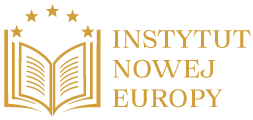
























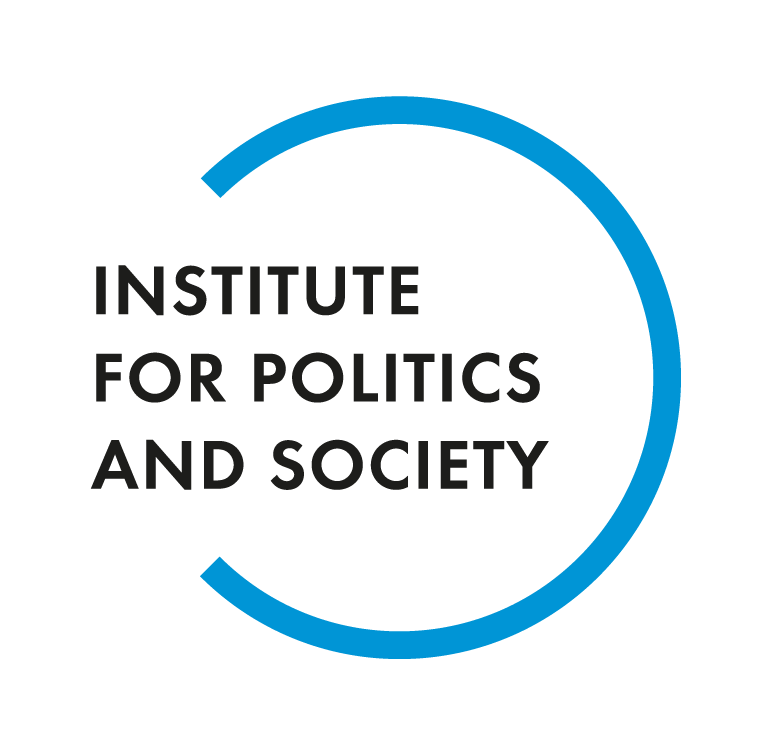



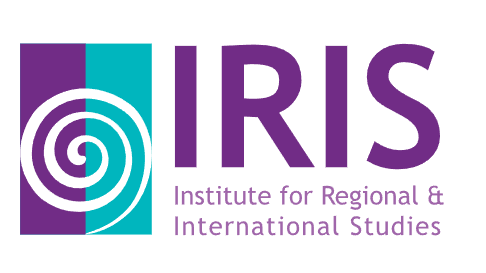
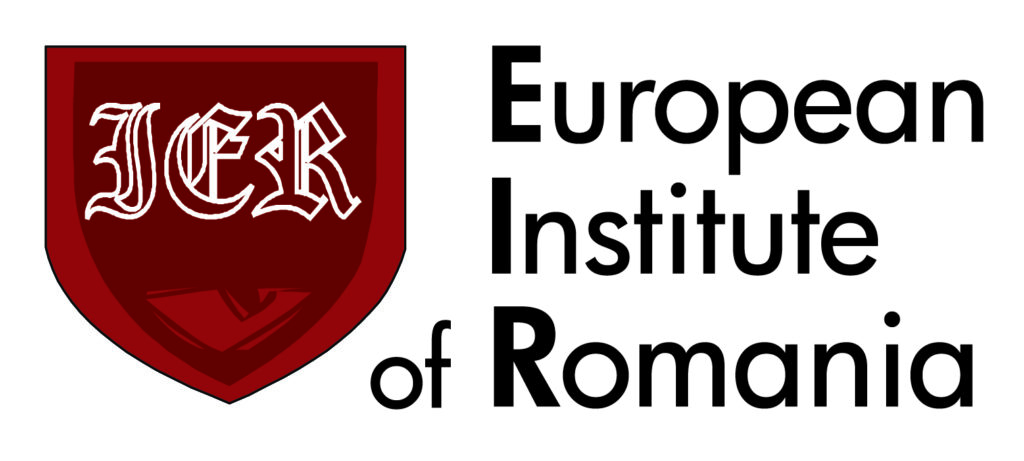
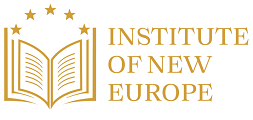
Comments are closed.